What is Bumble Foot?
Bumblefoot, or plantar pododermatitis, is caused by the introduction of a bacteria called staphylococcus. Bumble Foot is usually found at the base of the foot, but the bacteria can live on the toes, hocks and pads of a chicken’s foot. It is more common in heavier and larger chickens. The bacteria enters the chicken through a cut, scrape or scratch, it can cause a very nasty infection and is commonly seen as a swollen puss filled bulb on the chicken’s foot or a black lump.
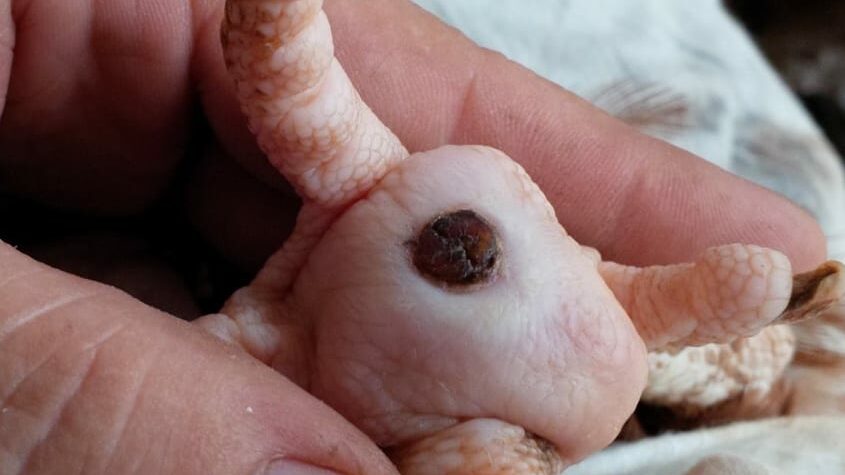
What are the main symptoms of Bumble Foot in chickens?
- Lameness, you will most likely notice that your chicken is struggling to walk and is reluctant to place their foot down opting to stand on one leg a lot more than normal.
- Limping
- Swelling, the foot, leg and hock can become swollen as bumble foot can cause inflammation in and around the infected area.
- Resting a lot more than normal, they will be reluctant to walk about and you may notice them sitting for longer periods.
- Not roosting, if you have a roosting hen you may notice they are not wanting to perch and roost as normal.
How is Bumble Foot contracted?
The cause is usually a small puncture wound or cut from the rough edge of a perch or an accidental landing on a sharp stone, this is then infected with a bacteria picked up from the ground.
How to prevent Bumble Foot?
Keeping a clean environment is one of the main ways to prevent an infection, make sure you regularly clean and disinfect your coop using our Virkon S single use sachets and good quality cleaners. Ensure your litter is freshened every 2-3 weeks and don’t let poo and muck build up in your run or coop.
Check your hens’ run and roosting areas regularly to ensure there are no sharp edges or stones etc... that could cause your hen to cut their foot.
Effective Treatment.
Bumble foot in its early stages is easily treatable at home, the first thing to do is to clean the infected area with a warm foot bath, you can use Epsom salts or a gentle solution of TCP or Iodine. Once the area has been cleaned and softened you will need to remove the dark circular cover of the initial point of the wound opening, once this is removed you will see a cheese like, yellow, hard substance, this is the infection. Infections in chickens do not become pustulant like they do in humans, the infection will resemble a yellow wax. Remove all of this from the wound, you can use tweezers and clean as you go. Once you have removed all the infection, disinfect the area again and cover with Aloe Vera gel. Aloe Vera gel is a natural antiseptic and will stimulate accelerated wound healing. Aloe Vera has potent antibacterial, antifungal, and antiviral properties and is proven to be effective against staphylococcus which is the main bacteria found to cause Bumble Foot. You will then need to cover the wound with gauze and vet tape to keep it clean as it heals, this can be tricky but is important.
Once the wound is treated repeat this process every other day. If you do not see an improvement within a couple of weeks and the scab on the foot becomes hard and black again you should consult your local vet as your hen may need a course of antibiotics and surgery to remove the infection and callus.
If left untreated Bumble foot can spread up the chicken’s leg and cause permanent lameness and even death.
What is an Internal Infection?
Internal infections in your chicken can range from parasites, egg binding, fungal infections to gastrointestinal infections. These kinds of infections are quite hard to confirm without testing but there are some signs you can look out for. If you can rule out other more common illnesses and your hen is still unwell and has any or all of the below symptoms, then you may need to consult your vet for testing to ascertain if they have some kind of internal infection that may need an antibiotic treatment.
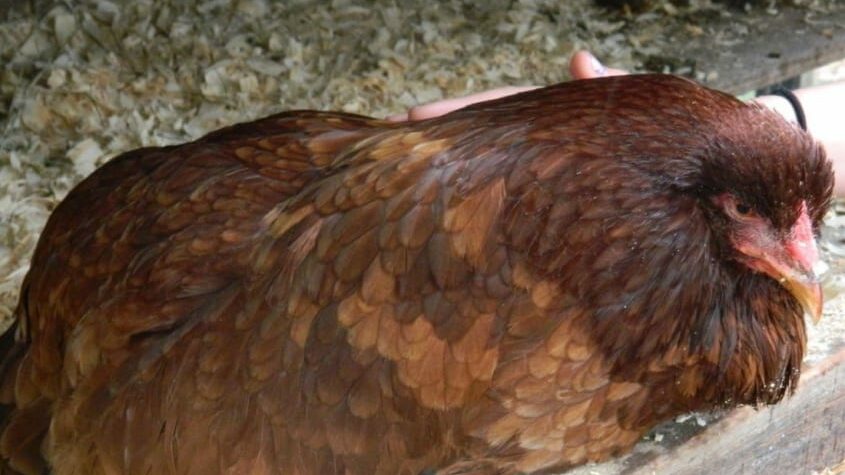
What are the main symptoms of an Internal Infection in chickens?
It can be hard to pin pinpoint an internal infection but there are some common symptoms to look out for, once you have ruled out the other common illnesses and your hen is exhibiting any or all of the below, we recommend consulting a vet.
- Lethargy.
- Loss of appetite.
- Sudden weight loss and emaciation.
- Anaemia, paling of the wattle and combes.
- Runny and green poo.
- Signs of a fungal infection in the back end with very white discharge and irritation.
- Worms in their stool.
- Reduced laying or a total stop in laying.
How are Internal Infections contracted?
There are so many different types of internal infections that can be caused from anything including: yeast, fungal, genetic abnormalities, stuck eggs or malfunctioning reproductive systems. Parasites can also cause infections in the intestines leading to gastrolienal infections.
Chickens can also suffer from blood poisoning (sepsis) from external infections which would cause a lot of the same symptoms, so always check for cuts on your hen's body and feet to ensure they do not have an infected wound.
How to prevent Internal Infections?
Keeping a clean environment is one of the main ways to prevent fungal or bacterial infections, make sure you regularly clean and disinfect your coop using our Virkon S single use sachets and good quality cleaners. Ensure your litter is freshened every 2-3 weeks and don’t let poo and muck build up in your run or coop.
To prevent your hens contracting an internal fungal yeast infection keep their area as clean as recommended above, avoid feeding mouldy food as this can cause a yeast infection and ensure bedding is dry and clean. if you have a hen with an infection such as Vent Gleet remove any cockerels as they can spread the yeast infection from hen to hen.
Worm your hens regularly to avoid getting parasites and check your hens regularly for wounds and cuts.
Effective Treatment.
Once you have confirmed what kind of infection your hen has you can usually treat most with antibiotics which would need to be vet prescribed, you can pre-treat with over the counter treatments to help build strong immune systems and compact mild infections.
Vent Gleet is one of the most common internal fungal yeast infections found in chickens, antibiotics may not be effective in treating Vent Gleet, instead try using anti-fungal treatments instead. You can give your hen 1tbsp of natural live yogurt daily this is very good to help re-balance the PH levels in the gastrointestinal tract neutralising elevated yeast levels, you can also use an external fungal cream around the vent area.
Most gastrointestinal infections can be resolved with Bio Stop which is a great veterinary recommended product that is available on our website, this will help recondition the gut and stop diarrhoea it is very effective after an antibiotic treatment, during times of illness or stress.
Using a good quality multi vitamin and ensuring you keep your hens fit and healthy will help them combat infections.
Consult your vet if you have tried some of these home remedies and nothing as proven effective.
What is Wry Neck?
Wry neck is a condition also known as Star Gazing, the exact cause of wry neck can be one of a few things but it is simply a miss communication from the body to the brain meaning that your hens nervous system is not functioning correctly. This displays as a twisting of the neck, walking in circles or to one side. This condition can look very severe and can cause the hen to have serious mobility issues.
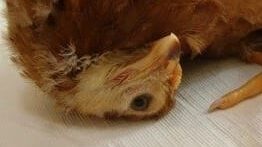
What are the main symptoms of Wry Neck in chickens?
- Twisting of the neck, this can be a subtle head bop to a full twist where the bird’s head will turn to look up at the sky.
- Walking in circles, wobbling or from hopping unsteadily side to side.
- Symptoms exacerbated by moments of stress or excitement.
- Dragging their head along the floor.
- Otherwise showing no signs of illness, hens will appear quite happy in themselves and still want to eat and drink and be with their flock mates
What Causes Wry Neck?
Wry neck can be caused by one of a few reasons:
- Bad hatching, if you have a young chick with this condition, it could be that they did not hatch from their egg properly and have some kind of nerve damage.
- Lack of Vitamin B12 this is such an important vitamin for chickens, without enough vitamin B12 their brain cognitive function does not work properly resulting in the twisting of the neck and mobility issues.
- Brain damage, sometimes a bang to the head in the wrong place can cause this type of nerve damage, this is more common in pom-pom (crested) chickens due to their vaulted skull which creates a delicate area on the top of their head. Sadly, this is permanent although it can be treated or managed to be less severe. Causes could be jumping up to roost and hitting the top of the hen house, falling off a walkway that is too steep, a cockerel that is overly aggressive or perhaps too large for the hens, even a hard peck from a larger more aggressive breed can cause it.
- Inner ear infection, this results in the bird waling in circles a lot more than neck twisting.
How to prevent Wry Neck?
Preventing Wry Neck can be as simple as offering the right nutrition, ensure you use a good quality soluble multi vitamin with lots of added B12 vitamin. If you own crested breeds make sure you are only putting them in flocks with compatible breeds, for e.g. do not put Polands into a flock of rangy Hybrids, they will likely be pecked or bullied. If you have crested flightless birds such as Silkies make sure they can access their house easily, they do not like ladders or steep ramps. If you have roosting breeds, ensure there is enough head room from your roosting bars to the top if the house. If you have a cockerel, ensure you have the right sized cockerel for your hens and enough hens so that the ones you do have with him are not being ‘over worked’ we recommend a minimum of 6 hens per cockerel.
To prevent ear infections, check your hens regularly and keep a clean area.
Effective Treatment.
There are no set cures for this condition as it can depend on how severe the damage is and whether it is nutritional, brain damage or an inner ear infection.
If the cause is nutritional, then it can be resolved by changing to a very good high-quality pellet feed. We recommend using Fancy Feed, we use this feed on our small holding and have found it very effective with adult birds that have shown wry neck symptoms. We also recommend giving the hen an undiluted syringe of our Pipinchick Multi vitamin, 5mls once a day for about 10 days, this has been proven very effective for treating a chicken with nutritional wry neck. If this helps it is then advisable to ensure you are giving multi vitamin in their water constantly as your hens have a deficiency.
If this does not help then you could try an anti-inflammatory, we recommend using a liquid suspended ibuprofen, use 5ml per 1kg of chicken weight. Administer once daily for one week, this should really help as it will relax the muscles and allow the bird to have better control of their functions. Wry neck causes the muscles to spasm, and this is also why the bird can lose control of their functions.
Sadly, if the hen has permanent brain damage then it is unlikely she will fully recover, however, you can make her more comfortable, you can try giving 5ml of both suspended ibuprofen and Pipinchick multi vitamin daily, this can relieve the symptoms. With brain damage you may notice that the symptoms are not constant, they may show more when the hen is excited or frightened etc... but majority of the time they seem OK.
If you suspect an inner ear infection, the symptoms of this would lean more towards walking in circles and falling over, then you will probably need to consult your vet for an antibiotic.
Wry neck doesn’t often cause fatality unless the bird has lost all control of her motor functions and is unable to eat or drink, they can live with this condition for many years and will be quite happy in themselves but may need a little extra long-term care.
What is Sour Crop in chickens?
Chickens have quite an unusual digestive process as they do not have teeth. Food is stored in a pouch on their chests which is called a crop. Hens will fill their crop by foraging and grazing throughout the day, the crop will empty during the nighttime by softening the food with enzymes, from there the food goes down into their gizzard where the food is then ground up and digested.
Sometimes there can be a blockage in the primary digestive process and food can become stuck in their crop. If food becomes stuck in their crop it is not able to go down to their gizzard and they can develop issues such as a blocked crop, soured crop or compacted crop, all of the above if not treated can cause serious issues including death by starvation.
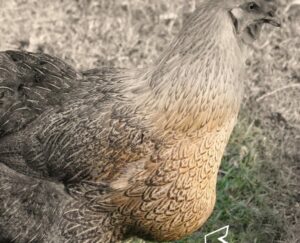
What are the main symptoms of a malfunctioning Crop?
- Weight loss, if your bird is not getting enough food they will lose weight.
- The crop may feel like a watery balloon, squishy and soft.
- The crop may also feel incredibly hard and compact.
- Foul smelling breath, if the crop becomes infected you may be able to smell the infection on the chicken’s breath.
- Lethargy, not getting enough nutrients may make your hen lethargic and floppy.
- Brown liquid spilling from your chicken’s beak when the crop is pressed.
- Morning crops being full, a correctly functioning crop should be full at night and empty in the morning.
How does a Chicken Get a Malfunctioning Crop?
There are 2 types of a malfunctioning Crop as below:
- Soured, this is when a crop has contracted a yeast infection leading to the thickening of the crop wall. Sour Crop is caused by a disruption of the normal bacteria that inhabit the crop with an overgrowth of Candidia (a fungal species) often occurring. This can be due to a blockage or by the hen eating mouldy feed.
- Impacted Crop, this can also be known as a blocked Crop or Compacted crop, this is as it sounds, the crop has become blocked and food is no longer reaching the gizzard, food then sits in the crop and over time will become soured and infected.
The exact causes are not fully understood however, in our experience we have found the below reasons most common.
- Feeding mouldy food.
- Long blades of grass or vegetable peelings, this tends to affect bantam hens more as their crops are smaller.
How to prevent Soured and Impacted Crops.
Try not to feed your hens, particularly bantams and smaller breeds any food that is large as this can easily cause a blockage, even very long blades of grass can get stuck and cause a backup of food in the crop. Ensure feed is fresh and not mouldy, only feed the correct feed for the birds you have.
Effective Treatment for a Soured or Impacted crop.
If your hen has a blockage in their crop you will need to flush it out, we advise seeking professional veterinary advice before attempting to flush the crop yourself, if you are fairly confident.
You can also find videos on YouTube on how to do this process.
Flushing is by far the best way to treat a soured crop; however, some try to treat with natural remedies that are given to try and break up the blockage internally. Although this can be effective, the best course of action is to remove the infection and blockage rather than try and treat as the hen would then just be digesting old food that has been stuck in her crop and this can then lead to further digestive issue.
If this is not effective and your hen still has a blockage then seek professional veterinary advice as they may need a surgery and antibiotics to remove the blockage.
Once the crop has been flushed and the blockage removes treating with a friendly bacteria and probiotics can be very effective, natural yogurt is very good along with Apple Cider Vinegar, you can also use a Canesten oral supplement for a soured crop.
What is a Calcium Deficiency in chickens?
Calcium and Vitamin D are very important for laying chickens, once a hen gets to laying age they will most likely need a calcium boost from time to time in their diet. Vitamin D works in unison with calcium as without enough Vitamin D your hen cannot absorb enough calcium. Calcium is used by the hen to produce the shell for her eggs. If she does not have enough Calcium in her diet she can begin laying mal-formed eggs, soft eggs, and her eggs can even get stuck causing her to become ‘egg bound’. If a hen does not have enough calcium, she will draw on her internal resources and this can cause her to have weak and brittle bones which can ultimately cause death.
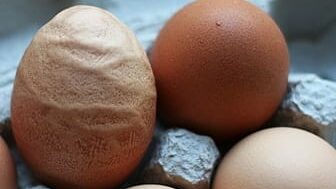
What are the main symptoms of a Vitamin D and Calcium Deficiency in Chickens?
- Broken eggs, your hen may result to breaking her own eggs to eat the shell to provide her with additional calcium. If she is breaking her eggs but leaving the shell and eating the inside this can mean she also has a protein deficiency, it can also mean she is just bored or anxious.
- Swollen or enflamed joints, stiffness or problems walking. Serious cases may present these symptoms as the hen is drawing calcium from her own bones to create the eggshells.
- Soft or thin shelled eggs or eggs that are not formed correctly with wavy lines, odd shapes and unusual shell textures.
- Severe feather plucking, sometimes your hen may pluck hers or her flock mate’s feathers in search of a calcium source.
How Does a Hen become Deficient In Calcium?
Hens can become deficient due to many reasons such as:
- Poor nutrition, not feeding the correct feed can cause deficiencies, hens of laying age should have a good quality Layers’ pellet feed make up 90% of their diet.
- Lack of daylight, hens that are kept indoors will often have issues laying due to the lack of day light and vitamin D, not enough vitamin D means your hen cannot absorb calcium correctly.
- Genetics, sometimes a hen may just be naturally deficient in calcium and need extra calcium in her diet constantly.
How to prevent and treat your hen for a Calcium Deficiency.
Preventing a calcium deficiency can be as easy as ensuring your hen is on the correct feed, laying hens should have Layers Pellet feed as 90% of their diet, you can also offer supplements during times when they may need an extra boost for e.g. when they first come into lay and during the winter months.
The best way to treat your hen for a Vit D3 and Calcium deficiency is to firstly up her Vitamin D intake we recommend giving Agrivite Feather Shell and Bone as a regular tonic supplement, and for severe cases we recommend Zolcal-D which is a liquid calcium and vitamin D veterinary support, this will give an instant boost.
You should also ensure going forward there are calcium sources available alongside her normal pellet feed. You can do this by giving one of our Forager Layer’s Aid treat mixes. These have been created with added Vit D and Calcium to give your hens a good boost from time to time. You can also mix in fine oyster shell to their treats and even into their pellet feed, we recommend scattering this as part of a treat as if given in a side dish the hen will usually ear round it, but included in a scatter feed treat they will forage and eat up the shell as well as the treat.
Hens will gather natural sources of calcium when foraging, so ensuring your hens have lots of foraging areas enriched with shell and grit if they are kept in a run is important, you can create these yourself by allocating an area within their run that you would use to create a forge pit, the best way is allowing them to have lots of free time out and about when you are around to supervise if you are in an area with predators, you can use electric fencing to create open larger area for predator safe foraging.
If you hen has become egg bound then you will need to seek veterinary support.
If you think your hen is egg bound check for the below symptoms:
- Messy back-end, she will have a mucky bottom, with perhaps discharge and runny poo.
- Solid mass around her undercarriage, you should be able to feel a stuck egg as a solid lump at her undercarriage area.
- Smelly, sometimes if the stuck egg can cause and internal infection you might be notice a rotten and acrid smell form her back end.
In severe cases you may need antibiotics and even surgery to remove the stuck egg. You can try natural remedies with anti-inflammatories and Epsom salt baths but it is advisable to seek veterinary help if she has become egg bound.
Prevention and spotting early signs of a Calcium/Vit D deficiency should stop this from happening, however, sometimes eggs can also become stuck due to a mal-functioning reproductive system.
What is Feather Moulting?
Feather Moulting is a normal but dramatic loss of feathers. Moulting is a natural process which allows your chickens to shed old and worn feathers and then re-grow fresh, shiny, new ones. It is a yearly cycle and will occur usually at the change of the season from summer into winter as the daylight hours are greatly reduced. The feather moult also allows your laying hen time to rejuvenate their reproductive organs as they will also stop laying during this time.
Young hens up to the age of about 18 months can also have many Juvenile Moults, these are a localised feather loss which can be found in areas such as the chest, lower back and pom poms in crested birds, once the hen reaches full maturity at around 18 months, they have a full moult where they will loose all their feathers in one go.
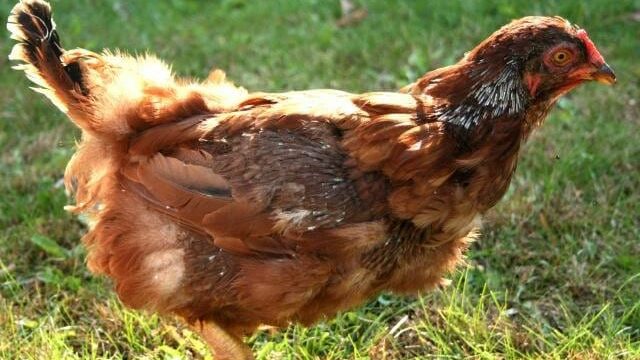
What are the main symptoms of Feather Moulting in chickens?
- Sudden and dramatic loss of feathers.
- Pale combe and wattles.
- Reduction or even a complete stop in egg production.
- Increase in appetite especially for proteins.
- New feather growth.
- Eating eggs, when chickens moult, they will need extra protein, they may resort to eating their flock mates’ eggs if they are not getting enough protein from their feed.
Helping Your Chicken Through Her Feather Moult.
As feather moulting is a natural occurrence and essential for your hen’s health there is no treatment to stop it, however, there are a few things you can do to help your hen during her moulting period. When your chicken moults she will use up a lot of the protein and iron stores in her body. Feathers are made of 90% protein so re-growing them will pretty much deplete her of protein, you can help her by increasing the amount of protein you give alongside her regular pellet feed. Protein is essential for building muscle and new tissue and as she grows new feathers she will benefit from an increase of natural protein. We don’t recommend using soy products but alternatively use natural healthy sources such as seeds, peanuts (in small amounts), by far the best source of protein are live mealworms and crustaceans.
You can also add ½ a teaspoon of ginger powder to her regular feed once a day, ginger has been proven to help speed up the growth of new tissue and feathers so this will also benefit her. Alternatively, you could try our specially formulated Feather Moult Pipinchick Forager Treat Mix, created with extra protein, ginger, added B12 vitamins and complexed carbohydrates which will also give your hen an energy boost during her moulting period.
Keep a good eye on your hen as her new feathers come through, the initial growth will look white as the pin feathers are covered by a skin membrane designed to protect these fragile new shots, once the feathers get larger this skin covering will naturally flake off.
Blood feathers is another name for these new pin feathers, but slightly different as a blood feather is a feather that has not grown through properly and bleeds, this can be painful for your hen and if the bleeding does not stop over time a vet may need to be consulted as the feather shoot may need to be removed so that a fresh feather can re-grow. Blood feathers can also cause infections especially on feather footed birds.
What is Mycoplasma?
Mycoplasma Gallisepticum (MG) is a bacteria-like organism that causes respiratory disease primarily in chickens and turkeys, but it can also infect gamebirds, pigeons, ducks, geese, peafowl and wild birds. MG infection in chickens is also known as Chronic Respiratory Disease (CRD). It sounds a lot more serious than it is, think of it is a chicken cold which is treatable with an antibiotic.
The mortality rate is low if caught early enough, if left untreated it can make the bird very unwell and they can die.
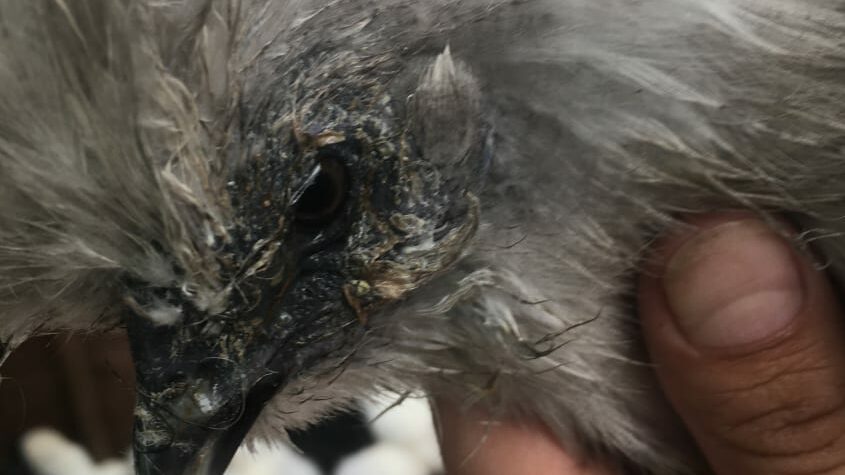
What are the main symptoms of Mycoplasma in chickens?
- Runny eyes, nose, crusting around the eyes and nasal passages.
- Breathing problems, this can be a wheeze or cough and is more noticeable at night when the birds are settling down to sleep.
- Sneezing, we call this the “snick”, it’s a short sharp sneeze that sounds almost like a wet cough.
- Lethargy and hunching, if an infection really takes hold of your hens they can become very still, unmotivated and lethargic, this can cause them to stop eating and drinking. This is a bad sign, it means the infection has really taken hold and you may struggle to bring the birds back to health.
How is Mycoplasma contracted?
Mycoplasma is contracted in a variety of different ways.
- It can be carried by wild birds; free range hens can come into contact with it easily.
- Mycoplasma can be transmitted in dust (fomites), on bedding, on shoes and clothing.
- The infectious agent survives for only a matter of days in the environment.
- Birds can also get the illness from stress triggers such as moving birds to different housing, adding new birds, a change in diet, parasite infection or even a sudden change in the weather (snow for example).
How to prevent Mycoplasma?
Keeping a clean environment is one of the main ways to prevent mycoplasma, make sure you regularly clean and disinfect your coop using our Virkon S single use sachets and good quality cleaners. Ensure your litter is freshened every 2-3 weeks and don’t let poo and muck build up in your run or coop.
Keeping your bird’s immune system strong is another great way to keep a mycoplasma infection under control, using our Pipinchick multi vitamin daily will really help boost a weak immune system, our multi vitamin has been created with extra B12 vitamin which is essential for a well-functioning immune system and good brain cognitive function. The stronger they are the better they will fight an infection.
You can get hens which have been vaccinated for Mycoplasma, however, this vaccine is not a lifetime vaccination and only offers about a 12-week protection period, it will mean your hens have a stronger immunity to Mycoplasma going forward, but it will also mean your flock caries Mycoplasma.
Effective Treatment.
The most common and effective treatment for Mycoplasma is an antibiotic called Tylan, you cannot buy this without a prescription, you will need to contact your local vet if you suspect your chickens have Mycoplasma for a diagnosis and a prescription.
Tylan is a water-soluble antibiotic, and a normal course would run for 7-10 days. Once your bird is on Tylan you should see improvement within 3 days, it is advisable to treat the entire flock.
If you birds have stopped eating or drinking it is important to get them back up and taking in nutrients, you can do this by syringing them some Tylan and vitamin water and use Nettex Poultry Power Drops, this is a great short-term solution to aid a lethargic chicken, the drops give the bird a
boost of energy which encourages them to start eating and drinking by themselves.
Once your hen has been treated and is on the road to recovery you can offer additional supplements that will help boost their immune system and aid in their recovery such as Agrivite Respite tonic.
What Mites, Lice and Parasites are common in chickens?
There are many different parasites that can cause noticeable symptoms in your chickens, the most common are:
- Red Mites
- Lice
- Worms (including Gape Worm)
- Scaly Leg
They are all a parasite and can cause an infestation that can manifest both internally or externally on or in your hen. Mites and lice are external parasites and can be seen on the skin of you hen, they sustain themselves by consuming your hen’s blood which can cause your hen to become deficient in iron and other essential minerals. Internal parasites such as thread worm or gape worm live inside your hen’s body using it as a host. All are very unpleasant for your hen, but most are very easily preventable and treatable. Red mites and poultry lice cannot live on humans.
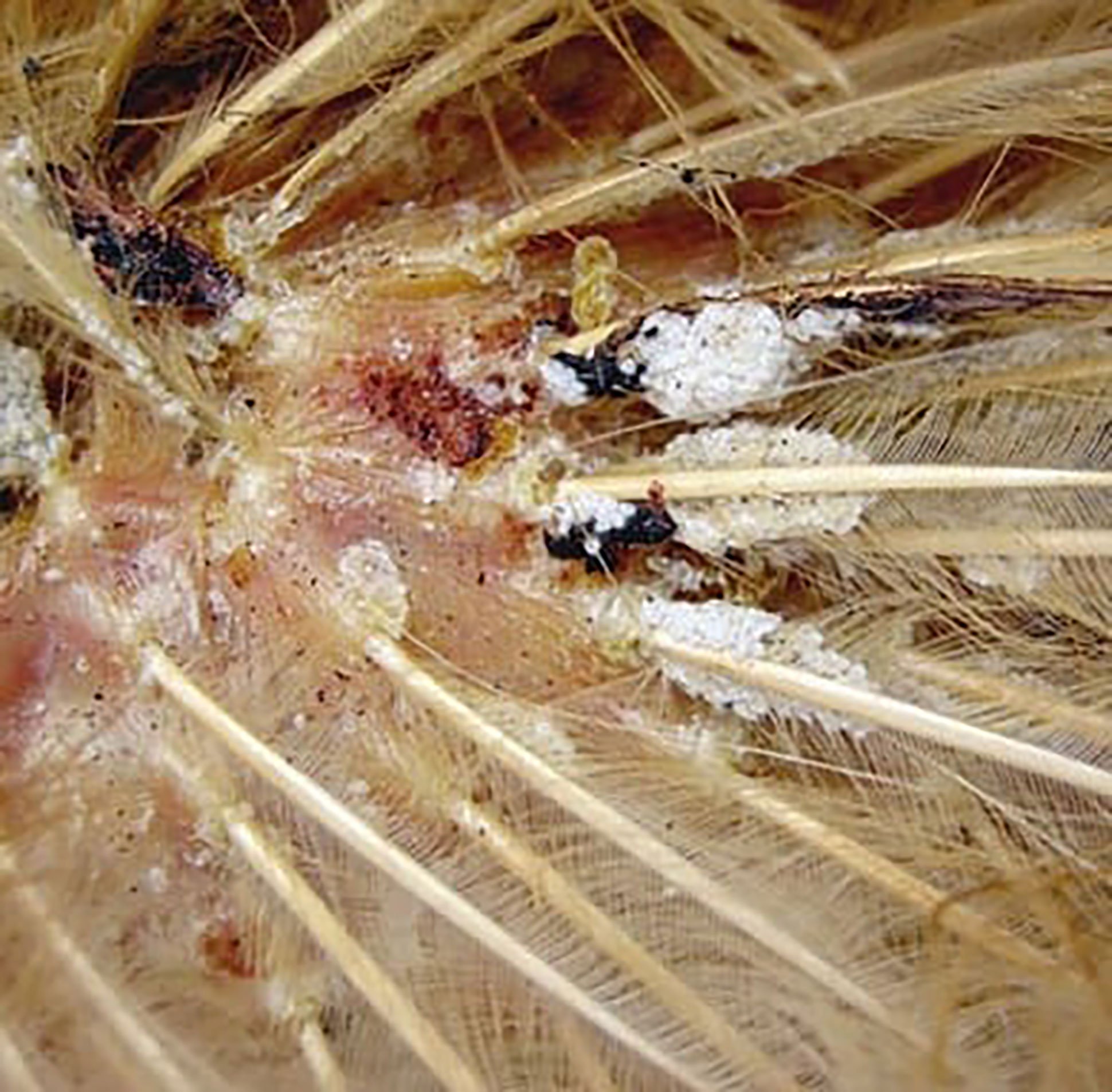
Mite Infestation.
What are the main symptoms of Mites, Lice and Parasites in chickens?
The symptoms can vary depending on the type if infestation but can be shown as some of the below:
- Pale combe and wattles, due to having an iron deficiency.
- Irritability and increased scratching.
- Loss of weight and overall condition.
- Wet and runny poo, possibly with worms visible in the stool.
- Gasping, gape worm is a parasite living in the respiratory system and cause gasping and problems breathing.
- Loss of appetite and lathery.
- Reluctance to go inside and sleep their coop, (red mites live inside the coop and come out at night to feed).
- Raised scales and white crusting on legs and feet
How are Mites, Lice and Parasites contracted?
All are contracted in a variety of different ways.
- Internal parasites are ingested and contracted from either wild bird poo or an infected flock mate’s faecal matter on the ground, as the hens then scratch and forage, they ingest infected poop.
- Internal parasites can therefor also be contracted from a dirty environment.
- Mites and Lice tend to be picked up when hens are out and about foraging.
- Mites and Lice can also be contracted from rats, other rodents and wildlife including wild birds.
- From infested coops and houses, red mite lives in wood and crevices (even in plastic houses) and can lay dormant for up to 1 year. Red mite is more prevalent during the warmer months as they cannot reproduce in cold weather.
How to prevent a Mite, Lice or Parasite Infestation.
Keeping a clean environment is one of the main ways to prevent any kind of parasite, make sure you regularly clean and disinfect your coop and run using our Virkon S single use sachets and good quality cleaners. Ensure your litter is freshened every 2-3 weeks and don’t let poo and muck build up in your run or coop. If you have a gravel or bark lined run, you will need to change the bark at the end of each year and disinfect the gravel regularly with a sprayer.
Have a read of our guide on how to prevent mites and lice by keeping a strict cleaning regime.
Chickens will naturally try to keep mites and lice at bay by bathing in dust baths, these are very easy to create and can work as a wonderful natural preventative. Creating a dust bath requires a tub of some kind you can use our readymade Scented Sands Dust Bath kit or you can make your own using: large tyres, old sinks/baths, plastic paddling pools etc… All work very well, we advise digging your tub or planter into the ground as hens will be more inclined to use a tub if it is flush with the ground, you will also need to ensure it is located in a covered area and kept dry. Once you have set up your tub you can then fill this with kiln dried sand and DE powder, the sand and diatomaceous earth (DE) work as a natural preventative for external mites, the tiny grains of both will cut the mites and lice and kill them.
Scaly leg attaches to your hen’s legs, it is an external parasite and is contracted by hen-to-hen contact, it presents as raised scaly looking bumps on your hen's legs and feet, you can prevent it by regular checks and as above keeping a clean area.
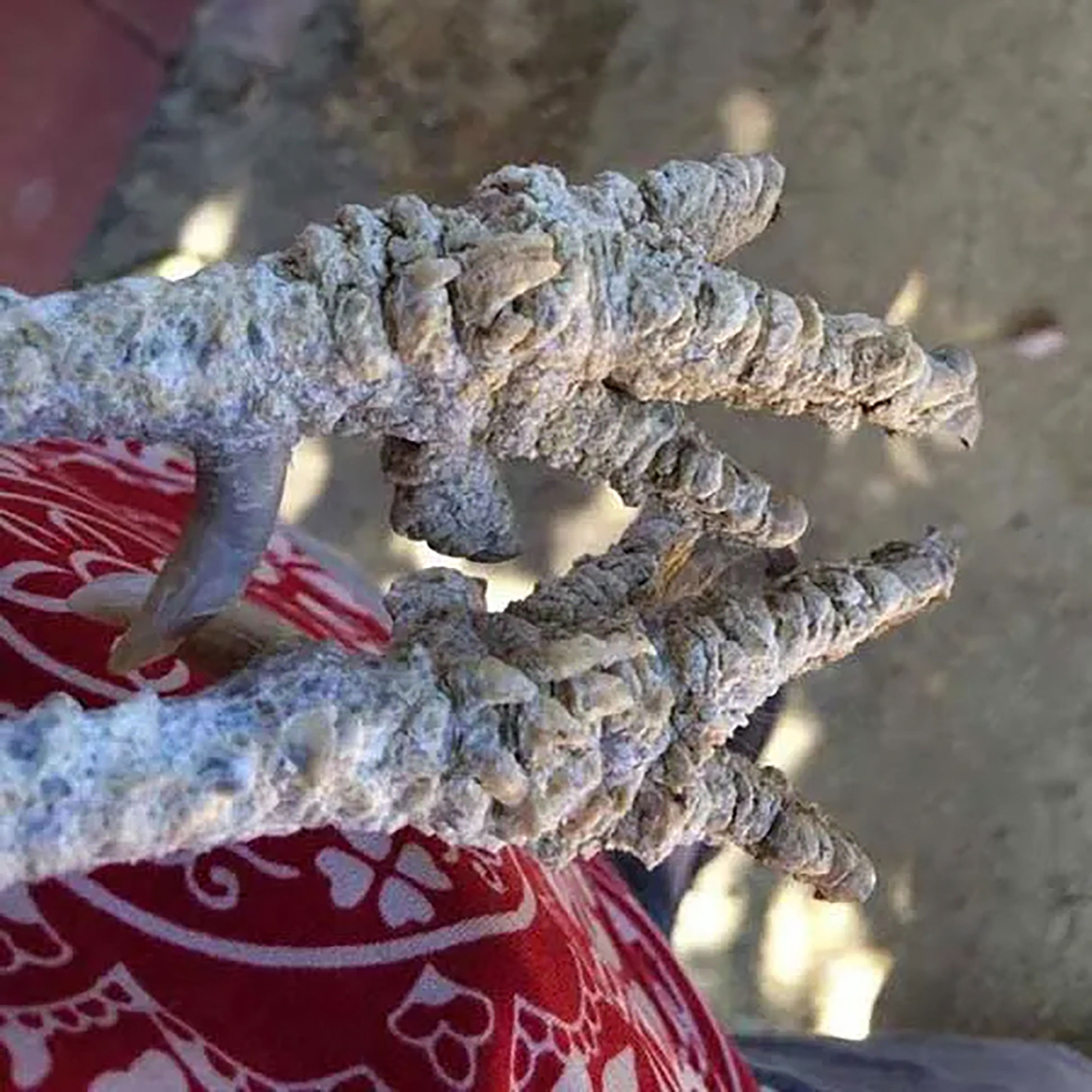
Scaly Leg Infestation.
Red Mite is a little trickier as the mites are nocturnal and will only come out at night to feast on your hens, preventing these will involve regular checks of your coop and hens at night using a head torch, and treating the coop/house and hens directly with DE powder from a puffer style bottle.
Preventing Internal parasites can be done by keeping a clean environment but also using natural preventatives such as garlic in your hens' water or readymade remedies such as Phytopet Wormood or Vermex. We don’t advise against using natural remedies, but natural preventatives are not proven as effective as keeping a clean environment and regularly treating with medicated wormers such as Flubenvet.
Effective Treatment for Mites, Lice and Parasites.
Internal Parasites including Gape Worm. Most internal parasites live in your hen's digestive system, however, gape worm lives in your hen's respiratory system and presents with different symptoms similar to Mycoplasma, such as gaping, lifting the head to the sky and gasping. All are treatable with Flubenvet powder, we recommend mixing with feed yourself. The ratio will be on the packaging, you simply estimate how much feed your hens will eat in a 7-10 day period depending on your treatment time, put this feed into a different container and mix with the correct amount of Flubenvet powder. Feed only this to your hens for the treatment period, no extra treats and if possible, cut down foraging time as you want the hens to consume as much of the treated feed as possible. We recommend treating your whole flock with powdered Flubenvet every 3-4 months regardless, it is not a preventative but will kill parasites at the time of treating so if you treat regularly, you will help stop an infestation gaining hold and during the periods between treatments you can use natural preventatives.
Treating for mites and lice can be done by cleaning your area thoroughly, and washing your hens in a flea or lice pet shampoo, it's advisable to dry with a blow dryer, once they are fully dry dust with DE powder, ensure when you dust with the powder you are parting the feathers and making sure the DE powder is making contact with the skin, particularly around your hen’s vent, under belly, under wings and thighs. For very bad infestations you may need to consult your vet, you can get a very effective water soluble treatment called Exzolt, this will kill all lice pr mites on your bird and is only available on prescription, you will still need to ensure your clean the area regularly once you have found an infestation, you can also trat your coop or house with DE powder too.
Scaly leg is a little different, the mites attach to your hen’s leg by burrowing under your hen’s leg scales, they then reproduce, and this eventually lifts the scales up, this is a good early indicator if you see the scales lifting away from the leg and turning white at the edges. Suffocating the mites is the best course of treatment, this can be done by slathering the leg and feet once a day in a barrier treatment such as Barrier Scaly Leg, this suffocates the mites already under the scales but also prevents more mites from attaching.
What is a Broody chicken?
Every so often your hen may go broody, this is more common in pure breeds than hybrids as pure breeds have not been genetically modified to mass produce eggs and they still run on a natural cycle.
A Broody Hen is a hen that has hit a point in her reproductive cycle where she has an overwhelming natural instinct to hatch a clutch of eggs and make chicks.
Sadly, as chickens are not the brightest of creatures this natural instinct is so strong she may sit on an empty nest. This broody period can last anything from 28 days to 3-4 month.
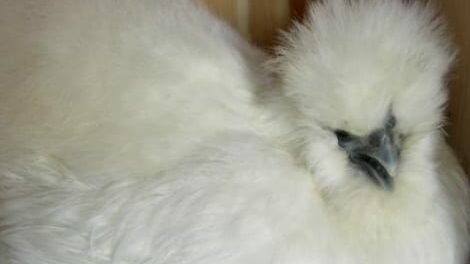
What are the main symptoms of a Broody chicken?
- Sudden change in behaviour, not leaving the nesting area, being grumpier than usual and standoffish if you approach her. She may fluff her body up and make a growling noise at you.
- Prolonged sitting in one place, usually inside the nesting area, they may only leave this area once a day.
- Feather loss, some broody hens will pluck feathers from their body to line their nests to help keep them warmer, the main areas would be from the upper chest and the base of the back. If you cannot see any lice/mites or a skin irritation, then this is the most likely cause.
- Reduced food intake, your broody hen will come off her nest once or twice a day to feed but you may notice a dramatic reduction in her food intake.
How to Help your Broody Hen.
There is no treatment that we feel effective for stopping a broody hen. You are fighting her natural instinct and as such she is unlikely to come off the brood easily. The below are some things you can try but, in our experience, she is best left to it and will naturally resume normal behaviour once she has had enough.
Remove all eggs, make sure you don’t leave eggs in the nest as this will make her instinct to sit even stronger, they can also explode if unfertile and get to warm, or go off and smell very bad!
Broody jail, some people report some success with removing the broody hen and placing her in a cage on her own for long periods. This can be effective as a last resort treatment if your hen has been broody for longer than 3 months and you are worried about her loosing too much weight and
condition.
Shutting her out the nesting area, however, we feel this can just cause stress as she will become very upset not being able to get back to her nest and will pace up and down in front of the coop door.
Dipping her bottom in cold water, this may be an old wives’ tale, but some people report it working.
Whilst your hen is broody it is important to make sure she gets the nutrients she needs as she will not be eating as much as normal, you can give her our Pipinchick multi vitamin in her water which will boost her immune system, we also have a great Forager treat mix designed specifically for broody hens with lots of extra nutrients, antioxidants and carbohydrates to make sure she gets a good boost whilst broody. You can feed her treats and supplements in the coop, pop a generous handful in a dish and place next to her, you may need to close the coop to allow only her to eat the special treats.

